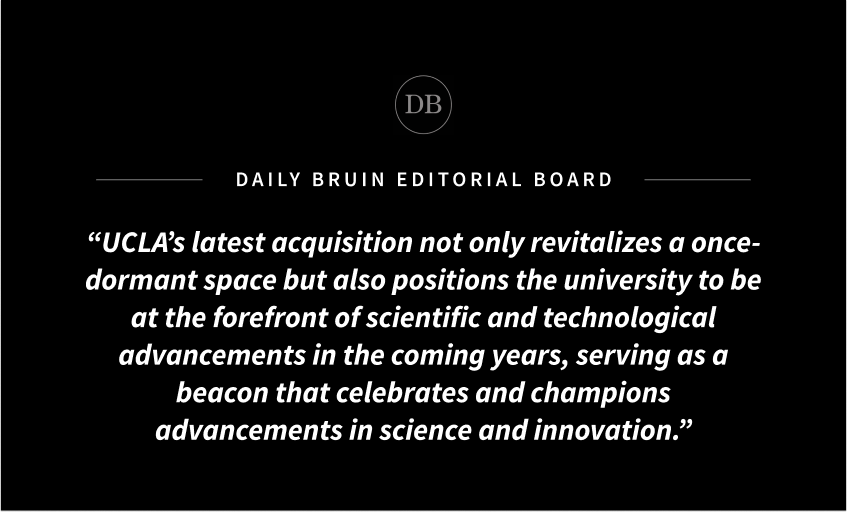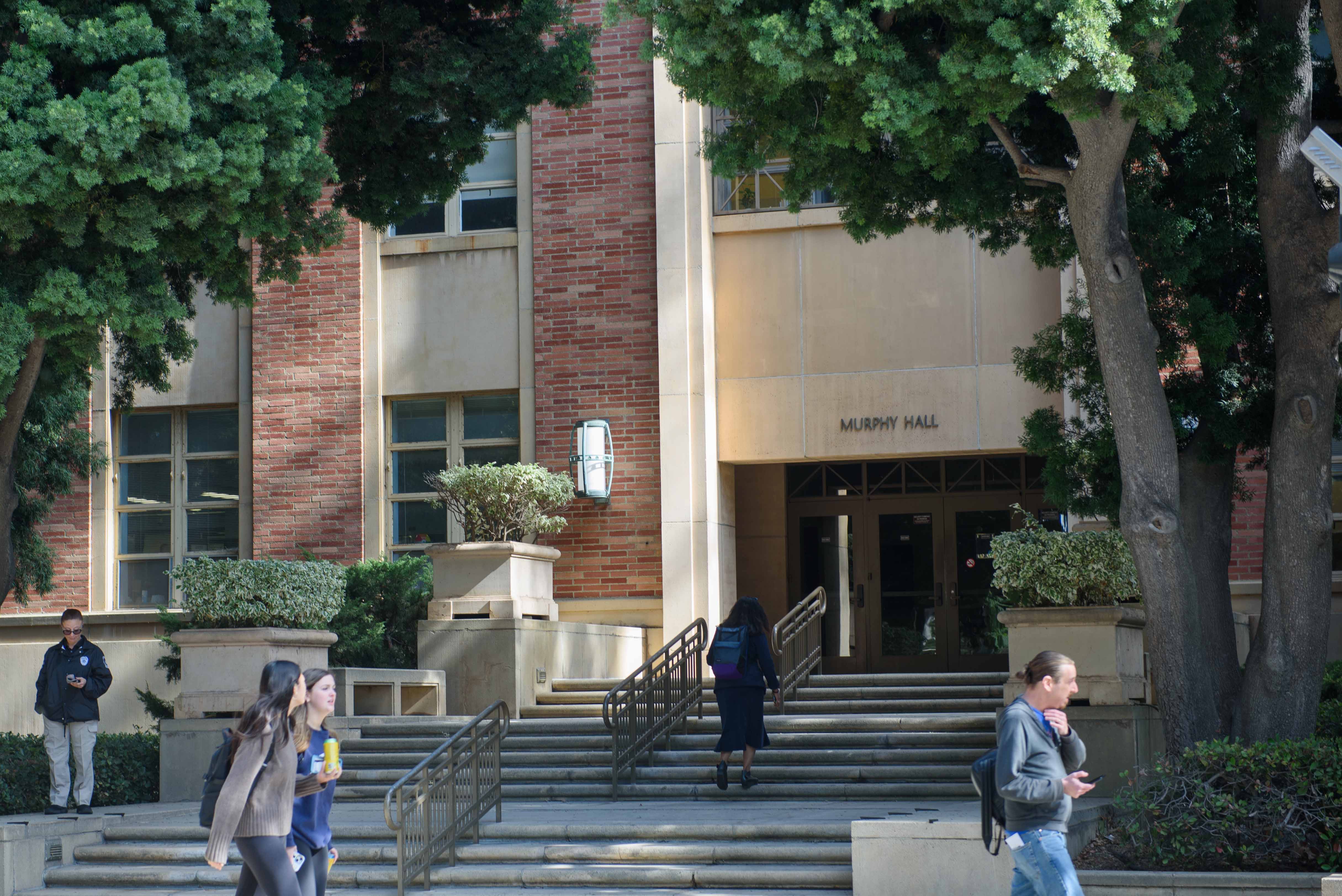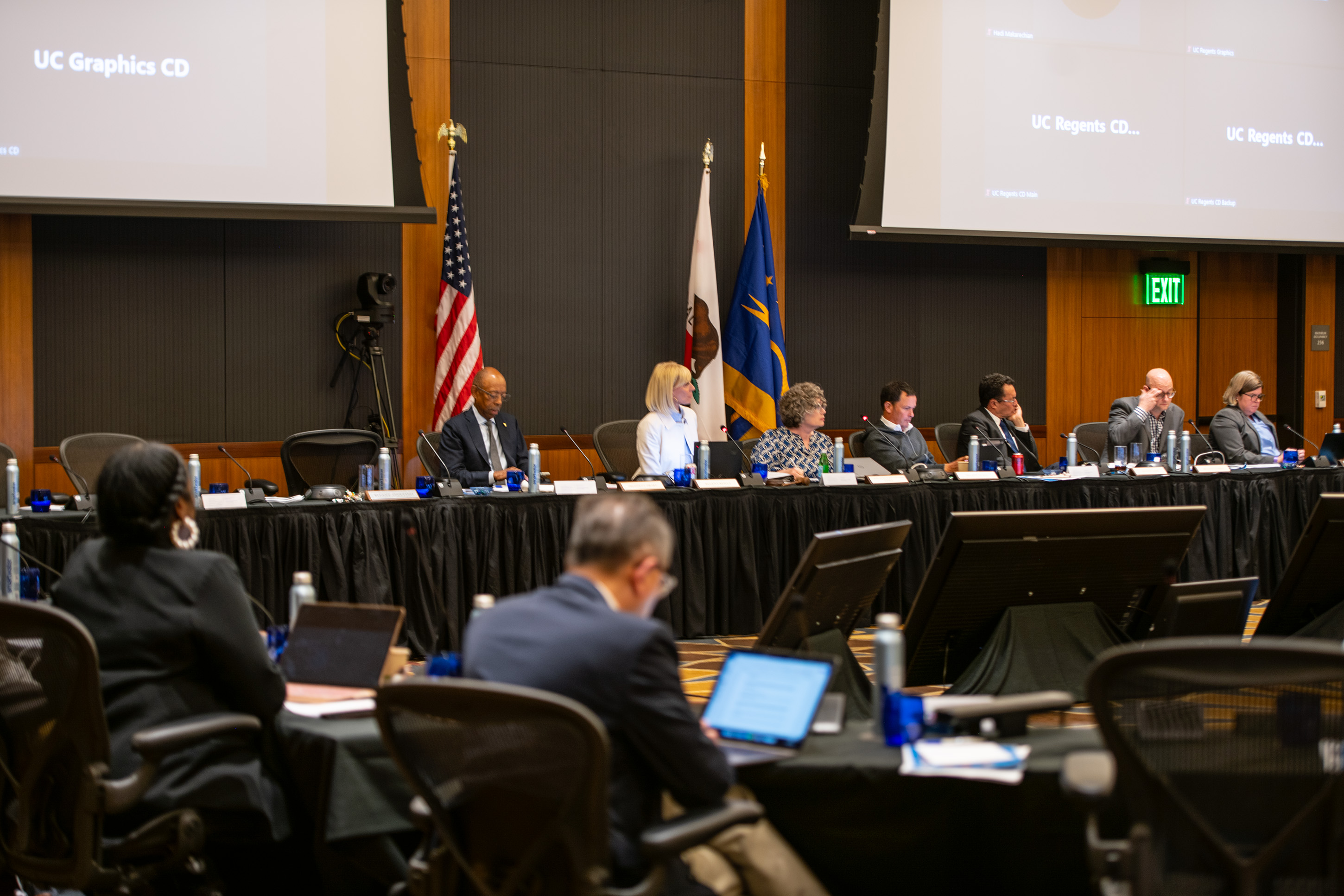Editorial: Federal NIH cuts will bleed university research programs dry

By Editorial Board
Feb. 18, 2025 12:04 a.m.
This post was updated Feb. 23 at 9:08 p.m.
Scientists in the United States have collected more Nobel Prizes than the rest of the world combined over the past five years.
This is not a coincidence.
Research initiatives in the U.S. make America healthy in a myriad of ways. The National Institutes of Health’s recent Trump-induced decision to cut funding for indirect research costs directly undermines the standard of excellence that exists for research institutions within the U.S.
Everyone – from UCLA students to tenured scientists to everyday citizens across the U.S. – will suffer from the fallout.
Each time the NIH awards a federally funded grant to a researcher or group of researchers, a certain percentage of those funds are allocated to indirect costs. This money covers things like equipment, maintenance and the salaries of crucial research personnel. The exact percentage of a grant allocated to these costs is negotiated between the NIH and the institution.
The NIH announced Feb. 7 that indirect costs will be capped at 15% in the new financial scheme. The NIH’s Office of Policy for Extramural Research Administration claims that $4 billion of federal funding will be saved.
But, as everyone who has taken introductory economics knows, there is no free lunch. Every federal spending cut incurs a cost.
Consider the research efforts that produced the pandemic-containing COVID-19 mRNA vaccine: This feat of science and innovation, estimated to have prevented millions of deaths, is like the Empire State Building. Indirect costs comprise the deep, underground foundation that allows such a building to stand tall.
Now, imagine excavating a significant chunk of that foundation. The integrity of that building will be lost almost immediately.
The same can be said for research projects in the U.S. if the new fiscal policy is enforced.
Research at UCLA will be one of the institutions disproportionately hindered by these cuts.
Due to our university’s competitive grant-pay structure and its consistently high quality research output, UCLA and the NIH negotiated a 57.5% rate for indirect costs – known as facilities and administrative costs on UCLA’s website and financial documentation – for on-campus research during the 2025 fiscal year, which is over double the average rate of 28%.
Applying the NIH’s new policy to the 2023 fiscal year could help illustrate its magnitude. In 2023, UCLA reported $270 million of federal revenue to cover indirect costs. That year, the negotiated rate for indirect costs for on-campus research projects was about 56%, which means the total amount of federal grant money, assuming for convenience that all research conducted at the university was on campus, was around $482 million.
A 15% indirect cost rate, from the baseline $482 million, would have left UCLA with about $72 million.
This is a nearly $200 million decrease in funding. While this estimate may deviate slightly from the actual number of dollars that will be cut, it is difficult to fathom how devastating this loss of funding will be, regardless of the scope.
Recall that indirect costs go toward salaries, equipment, maintenance costs, utilities, regulatory compliance procedures and more. These costs do not represent a miscellaneous handbag of extra duct tape or glass beakers that sits around, wasting away taxpayer dollars. These are irreplaceable components of the scientific process.
Snatching $200 million from indirect research requirements would be like forcing UCLA to build the Empire State Building without any underground foundation.
It is safe to say that with a budget cut of this magnitude, research labs would have to cancel research projects, downsize the scope of their work and possibly even close down completely.
This directly impacts UCLA students, too. About 45% of UCLA students participate in research here in some capacity. For many, this is a crucial extracurricular and intellectual pursuit that assists in preparation for a life beyond Westwood, whether that be in pursuing a PhD or a career in the pharmaceutical industry.
The NIH’s new policy, if carried out, would inevitably lead to fewer research opportunities for undergraduates and fewer full-time research jobs at UCLA post-graduation for those who might be interested in them. This not only affects current students but also disincentivizes future students or postdoctoral scholars from choosing UCLA for its status as a research university.
Beyond disrupting essential research at UCLA, the downstream effects of this policy will negatively impact society at large.
Projects funded by NIH grants are inherently dedicated toward advancing the public good in a fundamental way. Scientists have to make a strong case for the human impact of their work every time they submit a grant proposal.
Weakening – and effectively destroying – NIH-funded projects will not just halt the innovation and progress that defines research here and at other American institutions. It undermines collective efforts toward the betterment of our community, our country and our world.
Steps are being taken to combat the order, which a court recently temporarily blocked from taking effect, at UCLA and across the nation, but we are no way in the clear.
The Editorial Board believes the NIH’s new indirect cost policy will be monumentally damaging. And it falls upon UCLA administration, employees and students to fight back in some manner.
The Board encourages any and everyone as concerned as we are to exercise their political freedoms by writing to California senators Alex Padilla and Adam Schiff to take any measures necessary to resist prospects of the NIH’s indirect cost policy being carried through. A useful script from scientific communicator Dr. Elisabeth Marnik can be found here.
If we fail to act, we will have failed past, present and future generations of scientists and their monumental work. In turn, we will have failed each other.





